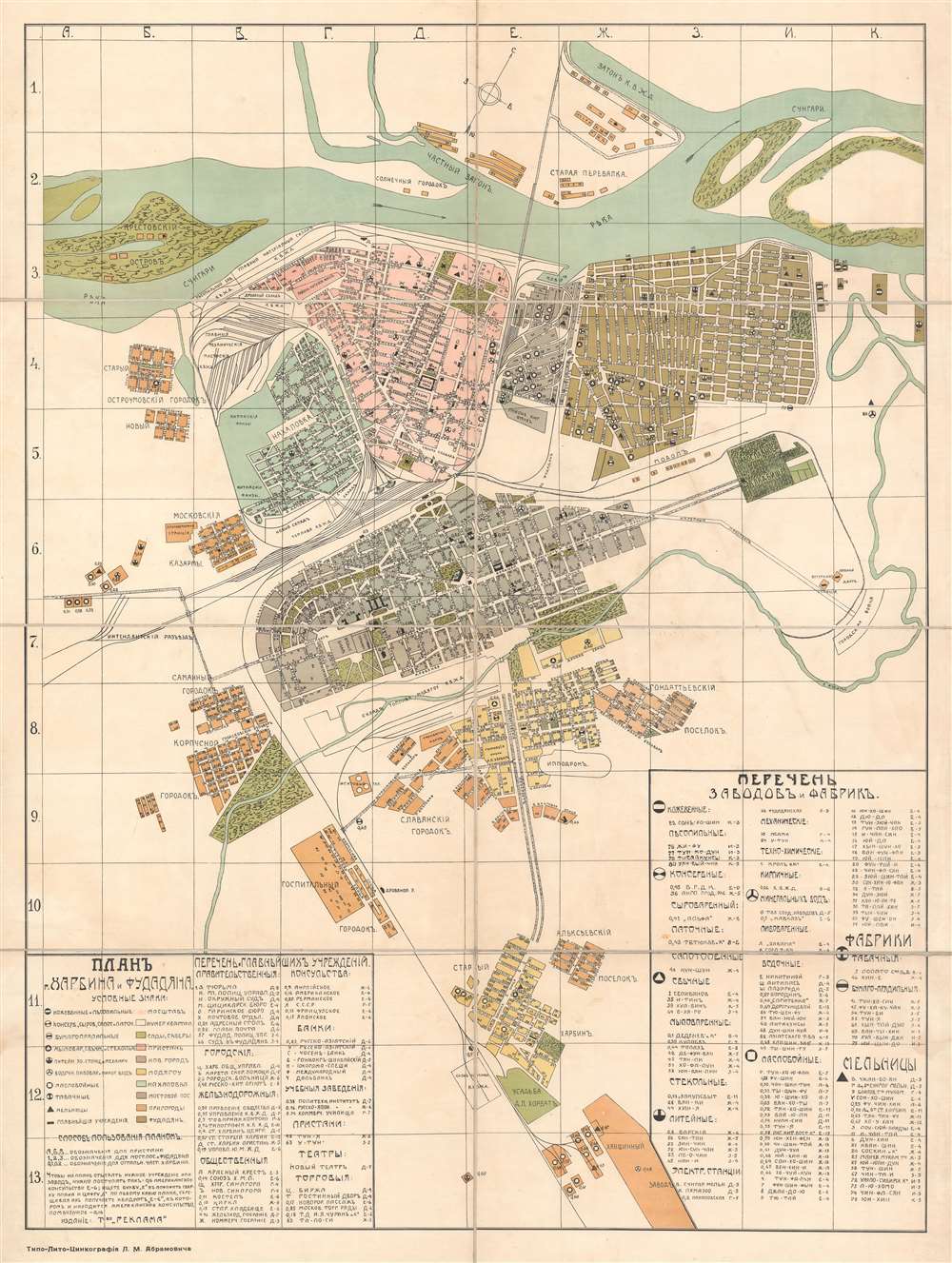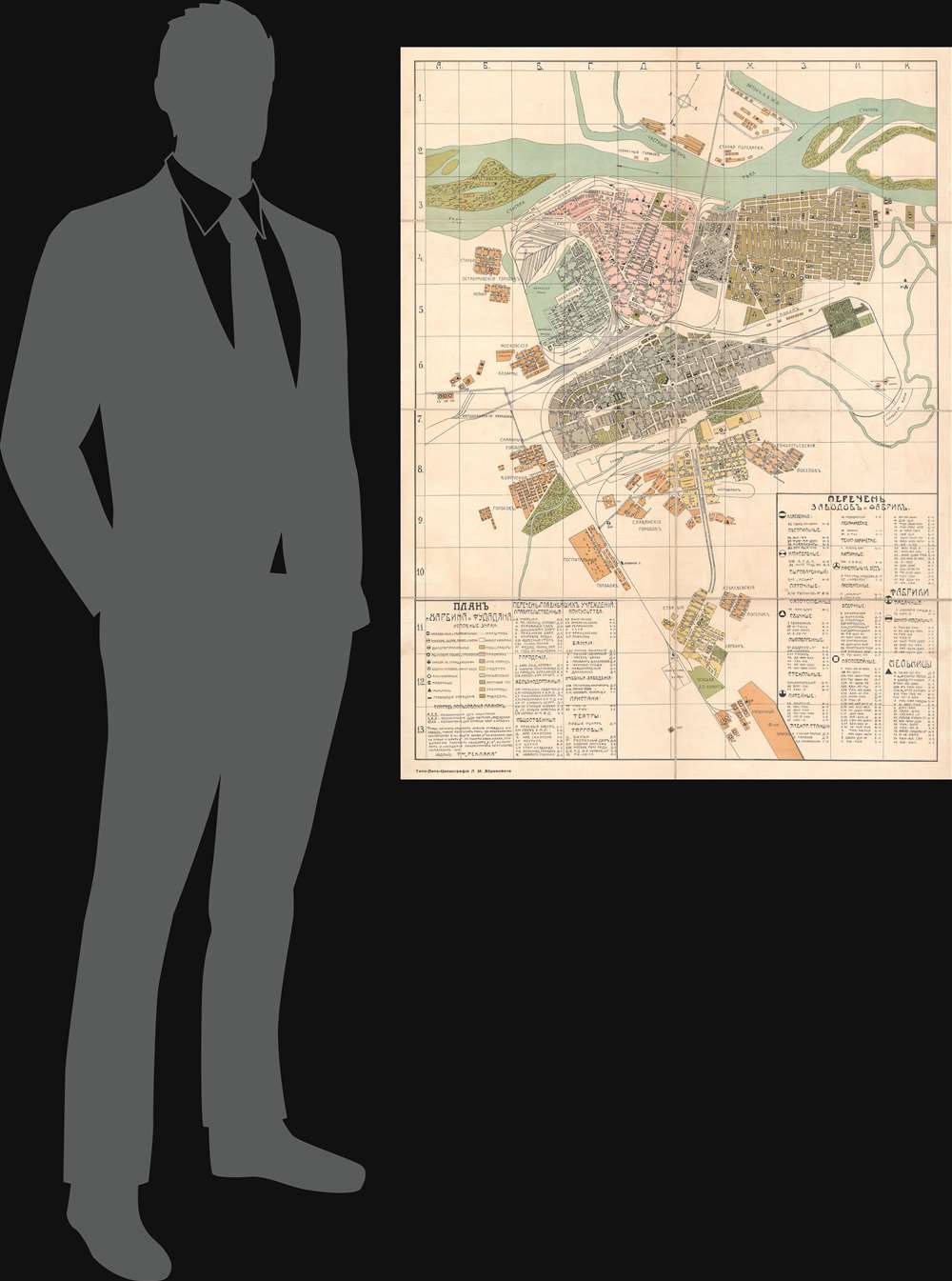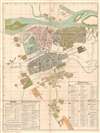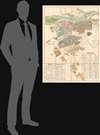This item has been sold, but you can get on the Waitlist to be notified if another example becomes available, or purchase a digital scan.
1927 Abramovich City Plan or Map of Harbin, China in Cyrillic
Harbin-abramovich-1927
Title
1927 (undated) 43.75 x 33 in (111.125 x 83.82 cm) 1 : 11000
Description
Understanding the Map
This map divides Harbin into several neighborhoods. When the map was made, most of these areas were technically restricted to Russian and European residents, with Chinese residents being limited to the brown Chinese zone, Fujiadian (Daowai), although this was not strictly enforced. The pink area is Pristan (The Wharf, Daoli), the central commercial hub with the best access to the river. Staryi Gorod (Old Town, Ziangfang) appears in light green to the west of Pristan. Novyi Gorod (New Town, Nangang) appears in gray at center, south of Pristan. This district is notable for its large Russian-style formally planned blocks, with a major thoroughfare, the Bolshoy Prospect, heading eastwards towards the green Russian Orthodox / Jewish Cemetery (today the People's Culture Park, the cemeteries were moved in 1958). The large brown zone, with tight crowded blocks, is the Chinese zone, Fujiadian (Daowai), significantly separated from the Russian parts of town by the dark grey railroad hub.The Cemeteries
The large cemetery at the end of the Bolshoy Prospect was, when it was established in 1903, the largest foreign cemetery in China. The main body of the cemetery was reserved for the Russian Orthodox. Slightly to the east, divided lots were set aside for Catholic, Lutheran, Muslim, Karaite, and Jewish burials. The graves here were moved to a new cemetery in the Harbin suburbs in 1958 to make way for the People's Cultural Park, which occupies this space today.Russia, the Chinese Eastern Railway, and Harbin
In the late 1890s, Russia built the Trans-Siberian Railway to connect Moscow with Vladivostok, its only Pacific port. Lake Baikal, a 400-mile-long and 5,200-mile-deep lake in Siberia, presented a distinct challenge. Until a route around the lake could be built, all cargo had to be unloaded, ferried across the lake, then reloaded on new trains - creating a major bottleneck. In 1896, China granted Russia a construction concession through Manchuria, offering a 'short-cut' south of the lake, through Harbin, to Vladivostok. Construction on the Manchuria line began in 1897, and traffic officially began moving in November 1901. A spur line from Harbin to the Port Arthur (Lüshunkou), an ice-free deep-water port on the Yellow Sea leased to Russia in 1897, was also built.Russians maintained control over Port Arthur until the Russo-Japanese War (1904 - 1905), when they lost both the port and the railroad south of Changchun to Japan. After the war, Chinese-Russian relations began to deteriorate. China signed an alliance with Japan and the United States against Russia, who was aggressively demanding a 'monopoly of rights' in Manchuria. The Russian Civil War / Bolshevik Revolution (1917 - 1922) aggravated tensions between China and Russia and led to the anti-Soviet White Army gaining control of the Chinese Eastern Railway from 1917 through (ostensibly) 1924 - although in fact by 1920 the city and much of the railroad were Chinese administered. In 1924, after the Communist victory, China and the USSR agreed to jointly administer the Chinese Eastern Railway.
The Japanese subsequently invaded Manchuria in 1931 and established the puppet state of Manchukuo. The Russians held on to the northern part of railway (North Manchuria Railway) until March 23, 1935, when, under coercion, they sold their rights to the railroad through Manchukuo to the Japanese. The USSR and China regained joint control of the railway at the end of World War II (1939 - 1945). In 1952, the Soviets transferred full control to the People's Republic of China.
Russians in Harbin
The first Russian émigrés in Harbin were employees and builders of the Chinese Eastern Railway. The first generation of Harbin Russians built most of Harbin from scratch - giving the city a distinctly European-Russian flair. Harbin became a cosmopolitan Russian 'colony' by 1913, home to fifty-three nationalities speaking forty-five languages. During the Russian Revolution and subsequent Russian Civil War, between 100,000 and 200,000 White Army Russians (anti-Soviet Czarists) exiled themselves Harbin. On September 8, 1920, China deregistered Russians in China, rejected all representatives of the Russian Empire, and removed all Russian extraterritoriality, thus rendering all Russian Harbinites stateless. Russians in Harbin, most of whom where White Army Czarists, had to either align themselves with Soviet Russians, or live stateless. Four years later, the Soviets and Chinese reached an agreement that only Soviet Russians and Chinese citizens could work on the Chinese Eastern Railway - further sidelining anti-Soviets in Harbin. After the Japanese invasion in 1931, most Russians left Harbin and fled either to the Soviet Union or to southern Chinese cities, including Shanghai. Many of these refugees eventually made their way to the United States, Australia, or South America. By the mid-1960s, all of Harbin's Russians had left the city.Russian Jews in Harbin
During the later years of Czarist Russia, Russian Jews were increasingly marginalized and placed under 'residency restrictions'. Although most settled in Belarus, Ukraine, Lithuania, and Russian-controlled parts of Poland, a significant population migrated to the Russian Far East, particularly Harbin, a liberal cosmopolitan city where, far from the Czar, they could enjoy greeter freedoms. In Harbin, the Jewish population thrived, acquiring political and economic influence, so much so that Harbin was called the 'Jerusalem of the East' and 'Happy Horvathia.' During the Russo-Japanese War, Harbin, the hub of the Russian controlled Chinese Eastern Railway, functioned as a supply depot and command center for Russian forces. More than 30,000 Jews were called up to fight for Russia against the Japanese. Many were captured and interred in Japanese prisoner-of-war camps. From the Japanese perspective, it must have seemed like Russia was a predominantly 'Jewish' state - although this could not have been farther from the truth. The Jewish population of Harbin continued to rise after the Russo-Japanese War, with many demobilized soldiers settling in the city. More new arrivals came to Harbin after fleeing the 1905 - 1907 pogroms in southwestern Russia. The Jewish community in Harbin reached its peak in the early 1930s and numbered between 10,000 to 15,000. An extensive Jewish publishing industry developed with 20 newspapers established between 1918 and 1930. Nonetheless, by 1939, the Harbin Jewish community had dwindled to about 5,000.Publication History and Census
This map was published by Lev Markovich Abramovich at his Harbin publishing house under the imprint 'Typo-Lite-Zincoography L.M. Abramovich'. This is the only known surviving example.Cartographer
Lev Markovich Abramovich (1884 - 1948) was a Russian Jewish emigré who lived and worked in Harbin, China, as a typographer, lithographer, and bookbinder. He graduated from a vocational school in Odessa in 1903 and worked in the Echo of China printing house in Shanghai from 1907 until 1910. Abramovich arrived in Harbin in 1910 and he founded the Typo-Lite-Zincoography L.M. Abramovich (Типо-Лито-Цинкографя Л. М. Абрамовича) in 1911. Authors living in 'Russian Harbin' often printed their books directly in printing houses and bypassed formal publishing houses, a practice for which Abramovich's printing firm was suited. Our research indicates that Abramovich's printing house closed in 1943. Abramovich died in Harbin in 1948. More by this mapmaker...




